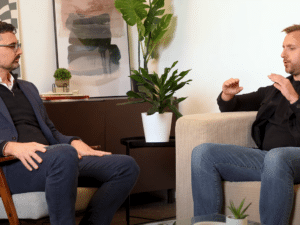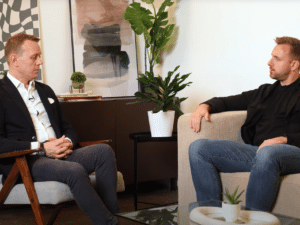How to help recruiters find you on LinkedIn (without your employer knowing)
If you’re looking for a new job or you’re open to opportunities, it’s important that you’re easy to find for recruiters who are helping hiring managers to fill new roles.
LinkedIn is by far the most popular social network for professionals around the world – now reaching over 1 billion people across 200+ countries. So how can you make it easy for recruiters to find and reach out to you without your current employer knowing you’re open to new roles?
Here are some simple tips to help jobseekers make the most of LinkedIn’s algorithms and become visible to recruiters and hiring managers.
1. Add specific skills (and more) to your LinkedIn profile
You can now add up to 100 skills on your LinkedIn profile. These can be added against your previous roles, volunteer positions and education. Bear in mind there are over 40,000 skills to choose from on LinkedIn, so try to be as specific as possible to make yourself stand out. For example, instead of “task management” try adding “HubSpot” or other relevant tech, skills and career interests.
Be sure to consider soft skills (e.g., emotional intelligence, interpersonal communication) and hard skills (e.g., brand strategy, Google Analytics, blog writing). This all helps towards building your own personal brand.
Utilising the skills feature drastically increases your chances of being found by the right recruiters during your job search on LinkedIn. This is because they use LinkedIn Recruiter tools to screen candidates that match the skills and job titles required for the new role they’re trying to fill. Many recruiters on LinkedIn explicitly use skills data to fill positions.
If you don’t have a current employer, you can also use LinkedIn’s “open to work” feature which shows LinkedIn’s social network that you’re job hunting. Be aware of your privacy settings for this as it’s a public feature.
Always make sure you have a profile photo that’s professional and looks like you.
2. Regularly check your LinkedIn inbox
This might sound obvious make sure you stay on top of your notifications and LinkedIn inbox (which categorises messages in “focused” and “other” folders). You never know – if you’re using the skills feature properly, your ideal new role could be sitting in your inbox.
If recruiters reach out to you about a job opportunity that isn’t right for you, they may still be a useful connection to have in the future. By exchanging even a few messages (especially if you mention you’re open to new roles) a recruiter may be more likely to contact you again with more opportunities.
There are many other ways you could benefit from a relationship with a recruiter. Aside from new job opportunities, they can give you free expert guidance (such as interview prep and CV writing), insights into the job market and networking connections.
3. Engage with the company pages you’d like to work for
Recruiters use the LinkedIn Recruiter tool to segment candidates that are engaged with specific company pages. For example, if you’ve followed pages, engaged with posts or applied for their jobs, you’re more likely to be contacted by a recruiter or hiring manager who’s filling a role at that company.
It also helps your job search to follow, engage with and send connection requests to relevant content creators, influencers and LinkedIn groups, plus the people that work for the companies you’re interested in. You could also bookmark relevant pages so you don’t miss any posts.
4. Upload your CV to your LinkedIn account
You can save and upload your CV to your LinkedIn account so it’s ready to use when you’re applying for jobs. This is a hidden feature only visible to recruiters using the LinkedIn Recruiter tool. Uploading your CV also helps you apply directly for new roles using the LinkedIn mobile app.
The purpose of your CV is to help you stand out from the crowd and hopefully gain you an interview with the recruiter and/or hiring manager. The best way to grab their attention is to make your CV as digestible as possible by focusing on your key (and relevant) achievements. A good template for your CV is to segment it by personal information (i.e., an overview of you), employment history, qualifications and interests. Find some more CV and interviews tips.
Complete our form below if you’d like to discuss job search strategies or anything else.



